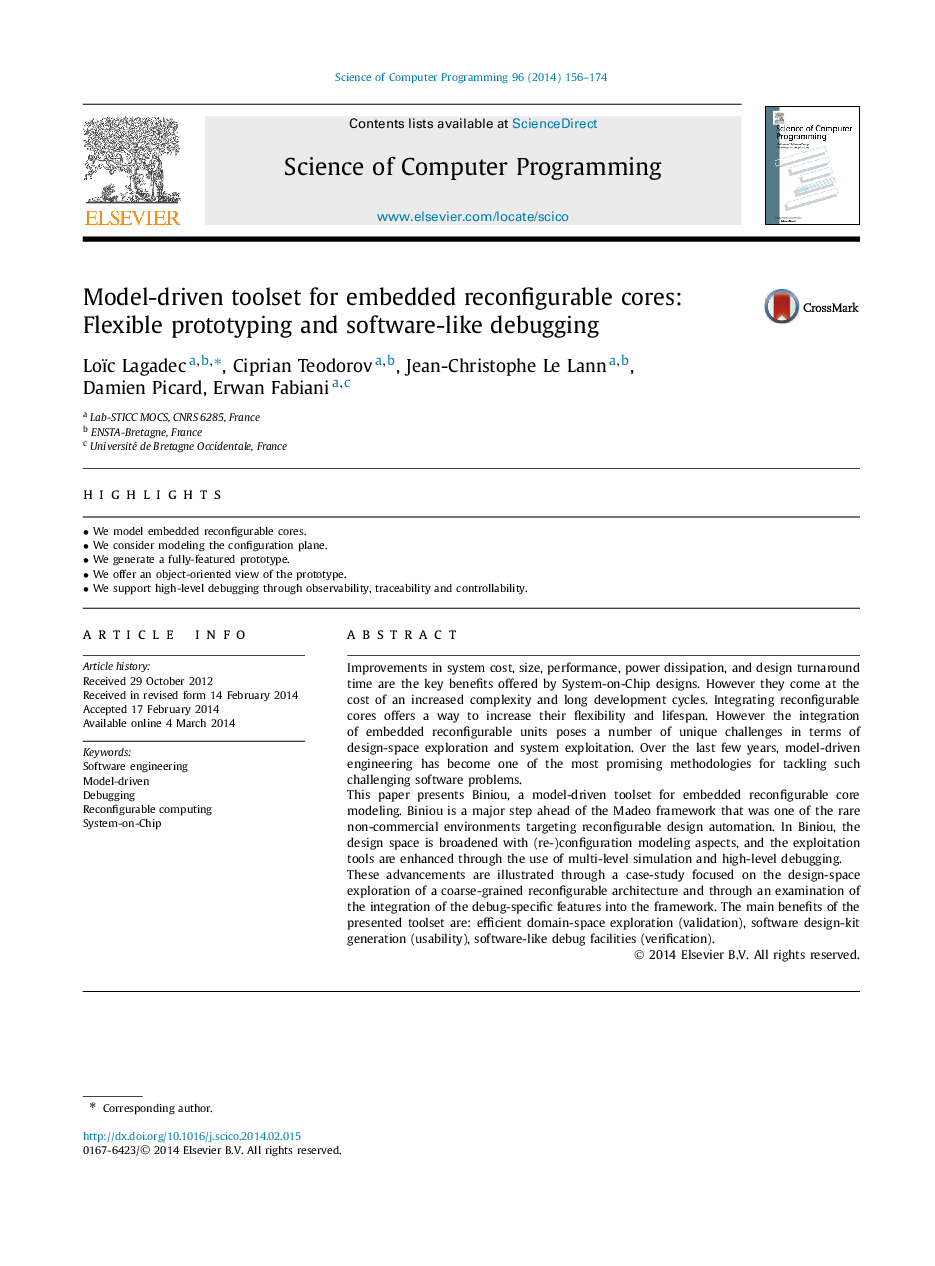| Article ID | Journal | Published Year | Pages | File Type |
|---|---|---|---|---|
| 433344 | Science of Computer Programming | 2014 | 19 Pages |
•We model embedded reconfigurable cores.•We consider modeling the configuration plane.•We generate a fully-featured prototype.•We offer an object-oriented view of the prototype.•We support high-level debugging through observability, traceability and controllability.
Improvements in system cost, size, performance, power dissipation, and design turnaround time are the key benefits offered by System-on-Chip designs. However they come at the cost of an increased complexity and long development cycles. Integrating reconfigurable cores offers a way to increase their flexibility and lifespan. However the integration of embedded reconfigurable units poses a number of unique challenges in terms of design-space exploration and system exploitation. Over the last few years, model-driven engineering has become one of the most promising methodologies for tackling such challenging software problems.This paper presents Biniou, a model-driven toolset for embedded reconfigurable core modeling. Biniou is a major step ahead of the Madeo framework that was one of the rare non-commercial environments targeting reconfigurable design automation. In Biniou, the design space is broadened with (re-)configuration modeling aspects, and the exploitation tools are enhanced through the use of multi-level simulation and high-level debugging.These advancements are illustrated through a case-study focused on the design-space exploration of a coarse-grained reconfigurable architecture and through an examination of the integration of the debug-specific features into the framework. The main benefits of the presented toolset are: efficient domain-space exploration (validation), software design-kit generation (usability), software-like debug facilities (verification).
